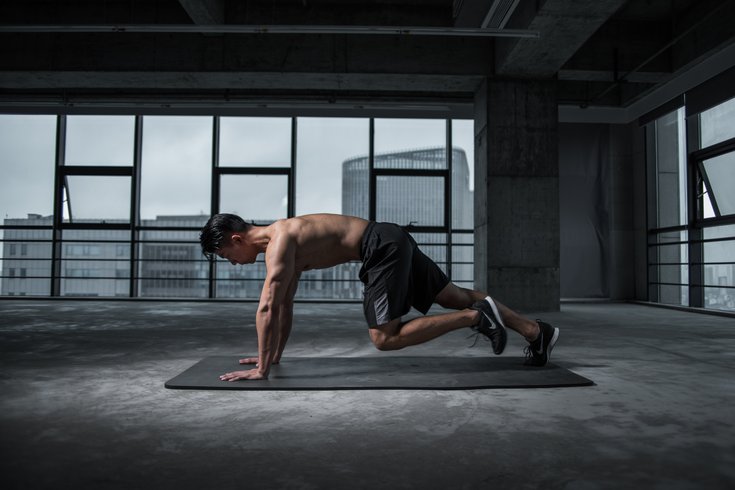
December 16, 2020
 Li Sun/Pexels
Li Sun/Pexels
A cardio workout can be any type of exercise that increases your heart rate, and it does not necessarily need to involve running or taking a spin class. Some cardio exercises that can be performed at home with no equipment are mountain climbers (seen above), jump squats, burpees and lunges.
Quick ... What's the first thing that comes to mind when you read the word "cardio?" Long, slow runs? Hour-long spin classes? You're definitely not alone in thinking about those, but I'm here to tell you that cardio doesn't have to mean running on that miserable hamster wheel we call a treadmill.
Your girl here loves a good run, so I'm not trying to stop you from becoming the next Forrest Gump, but I do think it's important to understand what cardio actually is and the many different forms a great cardio workout can take.
Let's start with the basics. Cardio is any form of exercise that raises your heart rate and gets your blood pumping, forcing your heart to deliver more oxygen to your muscles.
When this happens your body has to work harder to keep up, and that's when you're burning the most calories. The more cardio you incorporate into your workouts, the more tangible improvements you'll see in your fitness and overall health.
Put simply, are you breathing heavily? That's cardio!
And this is the crucial piece to internalize: Cardio does not necessarily mean the long, aerobic exercises mentioned above. You can get in your daily cardio workout with short anaerobic bursts of energy, too. What we really care about when engaging in cardio is the actual effect a workout has on our bodies, not the duration of the workout or the type of activity we're choosing.
It's tough to fit in a long run during a busy work day and an hour spin class can seem equally daunting, but traditional cardio – running, biking, hiking – isn't the only way to get it done.
Strength training is an awesome way to increase your cardio. Full-body movements and exercises that focus on large muscle groups require more oxygen to be delivered to muscles, which then increases your respiration and heart rate. Incorporate exercises like squats, deadlifts and push-ups into your next workout and easily up your cardio.
High-intensity training is also great for those short on time but still looking to fit cardio into their schedules.
Adding exercises that work on explosive power, like jump squats, box jumps, mountain climbers – really any exercise that forces you to push yourself for 30-45 seconds at a time is effective. These exercises should push you anaerobically, challenging you at max effort but for shorter amounts of time.
I once had a client who, following a tough, full-body workout asked if we could incorporate more cardio next session. I asked her if she remembered when we did those box jumps and how hard it was for her to catch her breath after. She responded, "Yeah, I'm still out of breath from those." That's when I smiled.
My point is that cardio doesn't always look the same, and yes, there will be some days when I have clients on the air bike doing sprints – this is the worst form of torture – and others when we get creative with our cardio.
I want to stress that there is nothing wrong with going on a long run, and of course, there are countless benefits to endurance training, such as a decreased risk of heart disease, stress relief and (both mine and Elle Wood's favorite reason) an increase in endorphins.
Get in those traditional forms of cardio when you can, but know you can just as easily do jumping jacks, high knees and jump lunges – among other exercises – in between strength sets.
Every workout should include a combination of basic full-body strength training, high-intensity exercises, and small-muscle accessory work. Check out the Instagram post below for an example of a tough, cardio-infused workout that includes no running.